Nor does the presence or absence of feet make the difference between them, for not only are some footless animals viviparous, as vipers and the cartilaginous fishes, while others are oviparous, as the other fishes and serpents, but also among those which have feet many are oviparous and many viviparous, as the quadrupeds above mentioned.And some which have feet, as man, and some which have not, as the whale and dolphin, are internally viviparous.By this character then it is not possible to divide them, nor is any of the locomotive organs the cause of this difference, but it is those animals which are more perfect in their nature and participate in a purer element which are viviparous, for nothing is internally viviparous unless it receive and breathe out air.But the more perfect are those which are hotter in their nature and have more moisture and are not earthy in their composition.And the measure of natural heat is the lung when it has blood in it, for generally those animals which have a lung are hotter than those which have not, and in the former class again those whose lung is not spongy nor solid nor containing only a little blood, but soft and full of blood.And as the animal is perfect but the egg and the scolex are imperfect, so the perfect is naturally produced from the more perfect.If animals are hotter as shown by their possessing a lung but drier in their nature, or are colder but have more moisture, then they either lay a perfect egg or are viviparous after laying an egg within themselves.
For birds and scaly reptiles because of their heat produce a perfect egg, but because of their dryness it is only an egg; the cartilaginous fishes have less heat than these but more moisture, so that they are intermediate, for they are both oviparous and viviparous within themselves, the former because they are cold, the latter because of their moisture; for moisture is vivifying, whereas dryness is furthest removed from what has life.Since they have neither feathers nor scales such as either reptiles or other fishes have, all which are signs rather of a dry and earthy nature, the egg they produce is soft;for the earthy matter does not come to the surface in their eggs any more than in themselves.This is why they lay eggs in themselves, for if the egg were laid externally it would be destroyed, having no protection.
Animals that are cold and rather dry than moist also lay eggs, but the egg is imperfect; at the same time, because they are of an earthy nature and the egg they produce is imperfect, therefore it has a hard integument that it may be preserved by the protection of the shell-like covering.Hence fishes, because they are scaly, and crustacea, because they are of an earthy nature, lay eggs with a hard integument.
The cephalopods, having themselves bodies of a sticky nature, preserve in the same way the imperfect eggs they lay, for they deposit a quantity of sticky material about the embryo.All insects produce a scolex.Now all the insects are bloodless, wherefore all creatures that produce a scolex from themselves are so.But we cannot say simply that all bloodless animals produce a scolex, for the classes overlap one another, (1) the insects, (2) the animals that produce a scolex, (3) those that lay their egg imperfect, as the scaly fishes, the crustacea, and the cephalopoda.I say that these form a gradation, for the eggs of these latter resemble a scolex, in that they increase after oviposition, and the scolex of insects again as it develops resembles an egg; how so we shall explain later.
We must observe how rightly Nature orders generation in regular gradation.The more perfect and hotter animals produce their young perfect in respect of quality (in respect of quantity this is so with no animal, for the young always increase in size after birth), and these generate living animals within themselves from the first.The second class do not generate perfect animals within themselves from the first (for they are only viviparous after first laying eggs), but still they are externally viviparous.The third class do not produce a perfect animal, but an egg, and this egg is perfect.Those whose nature is still colder than these produce an egg, but an imperfect one, which is perfected outside the body, as the class of scaly fishes, the crustacea, and the cephalopods.The fifth and coldest class does not even lay an egg from itself; but so far as the young ever attain to this condition at all, it is outside the body of the parent, as has been said already.For insects produce a scolex first; the scolex after developing becomes egg-like (for the so-called chrysalis or pupa is equivalent to an egg); then from this it is that a perfect animal comes into being, reaching the end of its development in the second change.
Some animals then, as said before, do not come into being from semen, but all the sanguinea do so which are generated by copulation, the male emitting semen into the female when this has entered into her the young are formed and assume their peculiar character, some within the animals themselves when they are viviparous, others in eggs.













